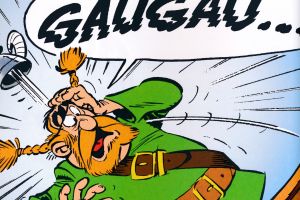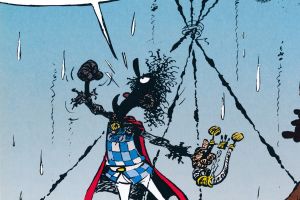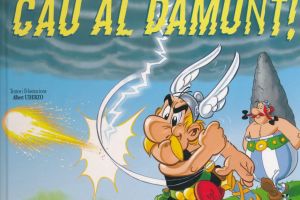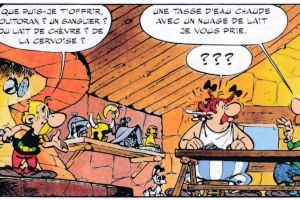Pirate Redbeard and His Crew in Asterix
The pirates are some of the most recognizable recurring side characters in the Asterix series. They first appeared in the fourth album, Asterix the Gladiator (1964), and were originally intended as a one-off parody. Since then, they have become a running gag in the adventures of Asterix and Obelix, almost always meeting disaster whenever they encounter the Gauls at sea.
A Parody of Redbeard (Barbe-Rouge)
The characters are a parody of the French adventure comic Barbe-Rouge (Redbeard), created in 1959 by Jean-Michel Charlier and Victor Hubinon for Pilote magazine. This was the same magazine where Asterix was first published. Readers at the time would have instantly recognized the joke: Goscinny and Uderzo turned the fearsome pirate Redbeard into a hapless, unlucky captain whose ship is repeatedly sunk or abandoned.

Captain Redbeard
Captain Redbeard (Barbe-Rouge in French) is the leader of the crew. Hot-tempered and despairing, he regularly loses his ship and crew’s livelihood whenever Asterix and Obelix appear. Despite this, he always reappears in later albums, continuing the gag. His look and name directly echo the original Barbe-Rouge character, though his role in Asterix is entirely comedic.
Pegleg (Triple-Patte)
Pegleg is Redbeard’s first mate, recognizable by his wooden leg. He is the accountant of the crew, constantly lamenting the financial ruin brought by their repeated shipwrecks. A distinctive trait is his frequent use of Latin quotations, which add an erudite, ironic touch to otherwise absurd situations. His learned outbursts are one of the elements that make the pirates more than just background characters, providing a contrast between high culture and slapstick humor.
Baba
Baba is the young African pirate who serves as the lookout. He is perhaps the most recognizable member of the crew after Redbeard himself. His character is marked by two traits: he often exclaims in panic when disaster strikes, and in the French editions he cannot pronounce the letter “R”, which makes his speech distinctive. This caricatural depiction, combined with his being the only Black character among the recurring cast, has led to criticism in modern times. Some commentators view his portrayal as a racial stereotype, and his role is discussed in relation to how comics from the 1960s used caricature.

Caricature in French Culture
In France, caricature has a long cultural tradition and is strongly protected as a form of satire. The so-called “droit à la caricature” (right to caricature) allows exaggeration and parody, even when it involves sensitive subjects. Baba’s portrayal belongs to this context: while considered acceptable comic exaggeration when the albums were first published, it can be read differently by today’s audiences. This tension between historical satire and contemporary interpretation is part of the ongoing discussion about the Asterix series and its legacy.
Erix
In their very first appearance in Asterix the Gladiator, the pirate crew also included a helmsman named Erix (Érix in French). However, he disappeared immediately afterwards. In Asterix and the Banquet (1965), Pegleg explains what happened: after losing their ship, the pirates had to sell Erix into slavery in order to raise money for a new vessel. This is the only canonical explanation for his disappearance. From that point on, the core pirate trio consisted only of Redbeard, Pegleg, and Baba, with Erix never returning to the series.

Anachronism
The pirates are also a deliberate anachronism. The Asterix adventures are set in the time of Julius Caesar (1st century BC), but the pirates resemble seafarers of the 17th and 18th centuries, the so-called “Golden Age of Piracy”. Their galleon, Pegleg’s wooden leg, and Baba’s lookout role all belong to much later eras. This asynchronism is intentional, one of many playful historical distortions that Goscinny and Uderzo used for humor throughout the series.
A Running Gag
The pirates’ fate is nearly always the same: their ship is destroyed, captured, or deliberately sunk to avoid battle with the Gauls. Their appearances are short but memorable, and the audience expects them as a comic interlude. Despite bankruptcy and repeated disasters, Redbeard and his crew always return in later albums.









Leave a comment (keep it civilised)